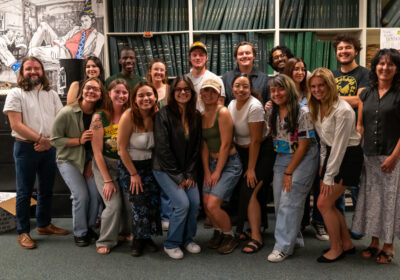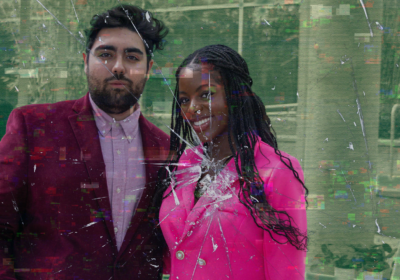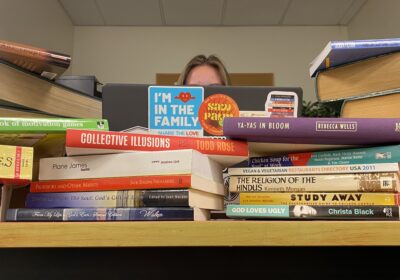Time to talk about underrepresentation in film

Underrepresenation in film is a conversation that Hollywood needs to have. SPECIAL TO THE ORACLE
The University of Southern California has analyzed 100 of the year’s highest-grossing films annually from 2007 to 2016 in order to determine the film industry’s inclusiveness both on and off screen. The report titled “Inequality in 900 Popular Films” takes gender, disability, LGBT status and race into account. Unfortunately, the results of the study reveal one constant: The domination of straight, able-bodied white men in Hollywood.
Out of the 4,583 characters studied from 2016, less than one-third were women, only 1.5 percent higher than when the study began in 2007. Of the same characters studied, only 2.7 percent had some type of disability and only 1.1 percent were LGBT-identified.
When it comes to the racial and ethnic breakdown, the results are just as shocking with 70.8 percent of the characters studied in 2016 were white. The U.S. movie-going audience is 49 percent racial/ethnic minorities. However, less than 30 percent of the characters in film are representing this portion of the population.
The statistics paint an even bleaker picture for women and ethnic minorities working behind the scenes in Hollywood. Of the 1,006 directors hired over the nine years, only 4.1 percent were women, only 5.6 percent were black and only three percent were Asian. There is also a huge drop-off in the number of individuals at intersections of these minority groups being hired with only three African-American women and two Asian women working as directors across 900 films.
There have been criticism against a number of different films for “whitewashing” characters that should clearly be portrayed by ethnic actors. Jake Gyllenhaal was casted in the “Prince of Persia,” Matt Damon was the lead in “The Great Wall” and Natalie Portman plays a character in her new movie “Annihilation” that is described as being Asian in the book.
Even when minority actors are cast they often play into tired, untrue stereotypes. As an Indian, I tend to be more nervous than excited at the idea of Indian culture being translated to film. The exhaustion of Indians being portrayed as doctors or taxi drivers with heavy accents and overbearing mothers is something I know all too well. The same goes for stereotypical portrayals of every other minority imaginable.Just in the past couple of years, films with more diverse leads have gained both critical acclaim and box-office success. “The Theory of Everything,” a biopic about Stephen Hawking, brought about conversation regarding ALS. Films made by and centered on women like “Wonder Woman” and “Lady Bird” have proven themselves through their various accomplishments. “Moonlight” and “Call Me by Your Name” told well-crafted stories through gay leading characters and collected multiple Academy Award Nominations. Finally, “Black Panther,” created start to finish by a predominantly black team, garnered stellar reviews and broke box-office records in the past couple of weeks. These movies have been consistently strong and successful, and there is no excuse for the industry to shy away from continuing to make them.
Top agencies act as gatekeepers of the industry, and they tend to repeatedly promote white actors and directors. The top three agencies account for approximately 70 percent of film directors and 72 percent of actors. This fact makes it apparent that if there is going to be a change in film, it must start from there.
Action has to be taken in order to bridge the gap between the reality of the film industry and the reality of the population. If filmmaking is a medium for storytelling, the industry needs to keep in mind that we all go through the same emotions and struggles, and many of the stories they are channeling through conventional leads can be done just as well through more diverse characters.
Sonu Trivedi is a sophomore majoring in mass communications.







